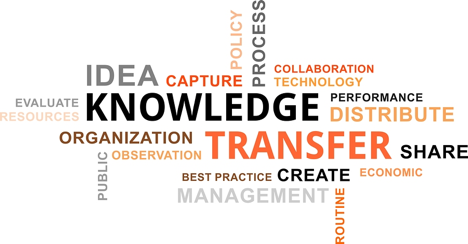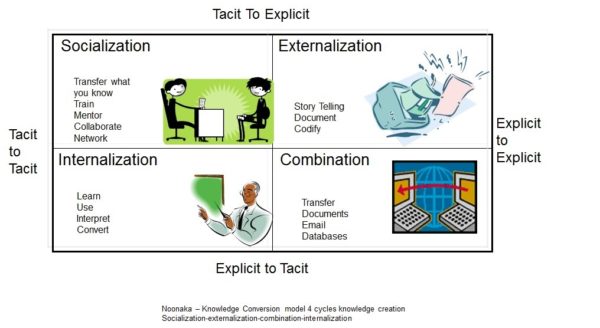Pearls of Wisdom: Part 1

This first of two posts covers some of the challenges of retaining the know-how of experienced staff in the face of changing work-force demographics. The authors compare tacit and explicit knowledge, and consider how companies might capture and retain this rich resource. The second post focuses on how MITRE recently brought its collective experience to bear while exploring knowledge retention challenges. —Editor
Authors: Margot Peet and Dan Ward
MITRE faces an ever-increasing number of annual departures as our baby boomer population (those born between 1946 and 1966) retires or leaves. As of June 2015, 13% of our technology professionals were age 62 or older and another 38% were ages 50 to 61. This 51% of our workforce increases to 52% if we add in the non-technical employees and employees working part time on call. MITRE’s expected retirement rate will double over the next decade, compared with the past decade.
Most U.S.-based employers anticipate a steady increase in retirements as baby boomers leave, but the impact is especially strong at MITRE because our core mission is to provide expertise that is seldom acquired without years of experience. As a point of comparison, while employees 50 years old or more represent 52% of our workforce, only 34% of the total U.S. workforce is that age. Prior to the 1990s, MITRE hired a broad range of employees, including many recent college graduates. At that time, successive waves of government cost reductions reduced the number of staffing opportunities, and MITRE shifted to hiring more experienced people who could immediately step into positions with solid experience and expertise. Following 9/11, as our sponsors began increasing staffing levels, they continued to want MITRE’s seasoned experts. The practice of primarily hiring mid- to late-career experts resulted in the age profile we have now.
Across U.S. industry, most employers lose 38-42% of their professional hires during their first five years of employment. MITRE does much better, but we still lose 28% of our early career employee hires. While these shorter service employees may not have the broad experience base of our seasoned population, they have essential knowledge the loss of which represents a blow to the collective wisdom of the company. How can we identify, capture, and pass on everyone’s tacit knowledge before it is irretrievably lost? MITRE’s Workforce Strategy Department and the Information Technology Tech Center joined forces to address this issue.
Workforce Strategy focuses on MITRE’s changing workforce needs and supports programs to ensure that we find, develop, motivate and retain workforce requirements. The IT Tech Center is a hub of MITRE expertise in knowledge capture and information search and retention, and staff have considerable insight into addressing our sponsors’ needs in these areas. The collaboration offered an opportunity to address our enterprise challenges and recommend ways forward based on collective expertise. The first item on our agenda was to characterize the kind of knowledge we were concerned with, the MITRE know-how that is the intrinsic or tacit knowledge that usually only exists within someone’s head. We reached into research literature to find a useful framework for thinking about these issues. Tacit knowledge is personal, experiential, context-specific and hard to formalize and communicate (Morey, Maybury and Thuraisingham, 2002). It can include a person’s mental model (Johnson-Laird, 1983). Tacit knowledge can also be current crafts and skills when associated with technical matters. We contrasted tacit knowledge with explicit, or codified knowledge that can be articulated, accessed, and readily verbalized. Codified knowledge can be easily transmitted in the form of documents or other storage media, while tacit knowledge cannot. Nonaka’s (1995) model of knowledge conversion captures these knowledge conversions in a succinct way: 
Figure 1 Nonaka Knowledge Conversion Model (p. 284)
- Socializing (internalizing) knowledge: Verbal transfer of knowledge from one person to another or several others through training, mentoring collaborating, or networking. Interviewing is a way to capture tacit knowledge.
- Internalizing tacit knowledge: The process of learning, from someone (tacit to tacit), learning by doing, or from some medium (explicit to tacit). Interpreting or converting knowledge are ways to enable internalization.
- Converting tacit knowledge to explicit knowledge: This is a knowledge creation process during which tacit knowledge becomes explicit. Written documents, analogies, models, hypotheses, concepts are explicit knowledge products.
- Combining explicit to explicit: Taking concepts and combining them to become a larger vision, or combining or manipulating knowledge contained in documents or in databases to generate and operationalize new concepts enables explicit-to-explicit transfer.
Our next blog post offers suggestions from MITRE staff who have thought deeply about this issue. What kind of know-how have you learned during your time with your company, and how would you pass that on to colleagues?

0 Comments